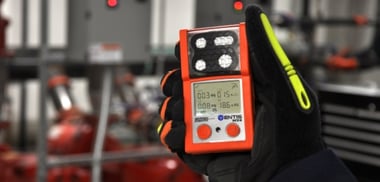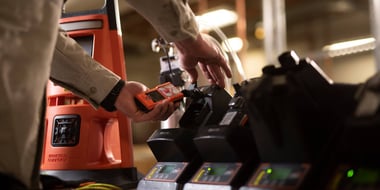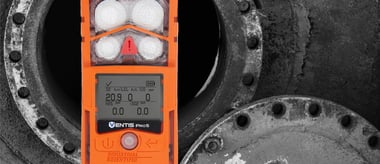 Gas detection systems are crucial for safety, but traditional systems come with long maintenance times, high costs, nuisance alarms, manual tracking of monitors, and manual requests for repairs or replacements.
Gas detection systems are crucial for safety, but traditional systems come with long maintenance times, high costs, nuisance alarms, manual tracking of monitors, and manual requests for repairs or replacements.
Do you know the true costs associated with gas detection? Beyond the obvious expenses, many hidden costs can significantly impact your operations.
The True Cost of Gas Detection
Gas detection costs can be put into two groups: direct and indirect costs. Direct costs are easy to calculate and show up easily on a company budget—like maintenance and repair expenses, calibration gas, and other consumables. Indirect costs, however, can be more difficult to nail down. They have a long-term effect on the company’s overall bottom line without being a direct line item in a budget. Indirect costs include:
- Labor: The time it takes your team to test, manage, manually track, and repair gas detectors.
- Downtime: The time lost on-site when your people can’t complete their jobs because of a faulty, out-of-date, or dead monitor.
- Safety Risks: Nuisance alarms can lead to complacency and increase the risk of incidents, while unreliable gas monitors compromise safety.
Indirect costs, though less visible, can significantly impact operational efficiency and overall productivity. What’s not listed here is the implicit cost of not conducting the maintenance your gas detectors require: a worker being hurt or killed on the job. All maintenance is intended to ensure gas detectors work properly so your people can do their jobs safely.
The Best Way to Maintain Your Gas Monitors
Industrial Scientific offers the only subscription service that simplifies all aspects of gas detection and eliminates maintenance pain by automatically repairing and replacing monitors and accessories. iNet® provides proactive maintenance, automated exchanges, and comprehensive monitoring, reducing downtime and overall costs while enhancing safety.
Gone are the days of manual tracking, log sheets, and a fleet of spare units—iNet takes care of your gas detection maintenance needs.
iNet is more than just an extended warranty; it's a commitment to ensuring your safety and operational efficiency. See side-by-side why iNet is the clear choice for your gas detection needs:

With iNet you’ll experience:
- Automated Alerts and Exchanges: iNet identifies issues before they arise and ships replacement gas monitors via next-day air.
- Reduction in Unexpected Downtime: Proactive maintenance keeps operations running smoothly, minimizing disruptions.
- Lower Overall Maintenance and Repair Costs: Comprehensive coverage eliminates unexpected expenses.
- Increased Efficiency and Reliability: Get next-day shipments for uninterrupted operations.
Cost Savings by the Numbers
When comparing iNet to buying gas detection equipment the traditional way, the differences in cost and efficiency are clear.
When comparing costs for a utilities provider, iNet covered all repair and replacement costs, while the traditional method resulted in nearly $300,000 in repairs. iNet also included shipping and eliminated the need for purchase orders, an additional savings of nearly $150,000. Over four years, iNet saved this customer 14% on their gas detection spending. Want to dive even deeper into the details? Check out this cost comparison guide.
Besides saving money, iNet offers extra benefits like proactive maintenance and replacements to keep equipment running, automatic refills of calibration gas, easier regulatory compliance with bump test and calibration reports, and access to expert customer support.
The costs considered individually may not seem like much, but they add up quickly as your program grows and as monitors age. By understanding and addressing these hidden expenses, companies can better manage their resources and improve their gas detection strategy.
Your Partner in Safety
The hidden costs of gas detection can significantly impact your operations and bottom line. Taking a manual, traditional approach leaves your workflows vulnerable to countless inefficiencies, like long maintenance times, high costs, false alarms, and manual tracking and repairs. These issues not only use up resources but also pose safety risks to your workers.
Don't let these hidden costs compromise your safety and efficiency. Switch to iNet and change the way you manage your gas detection program. Make the smart choice for your operations and ensure a safer, more productive workplace for everyone.



